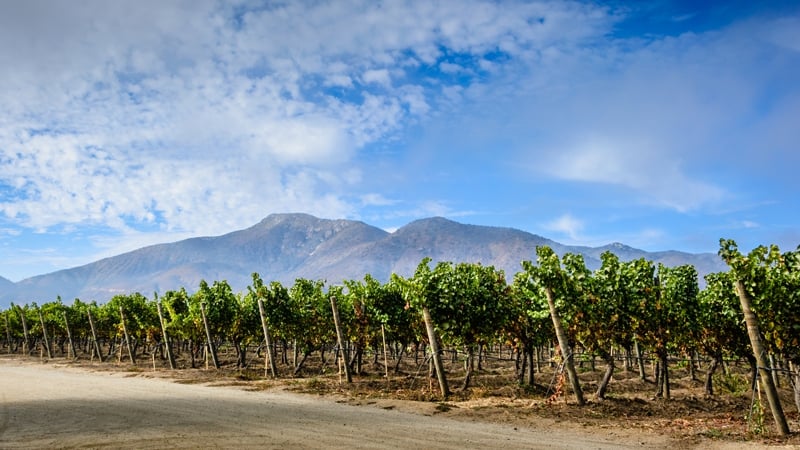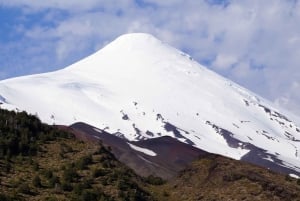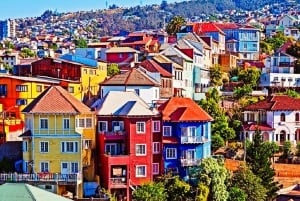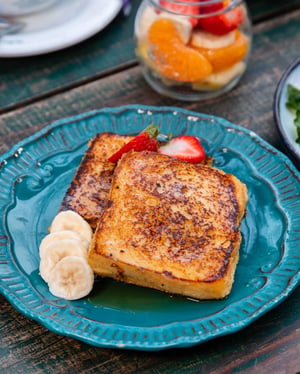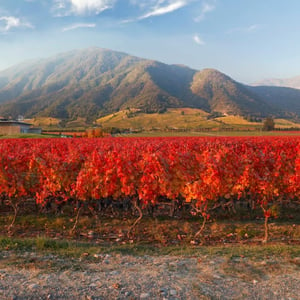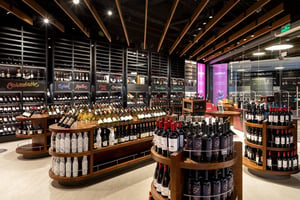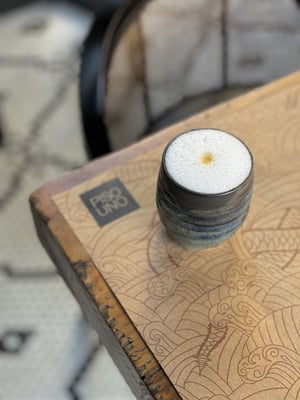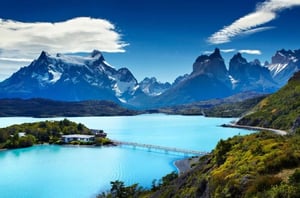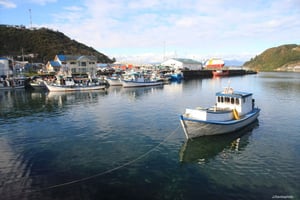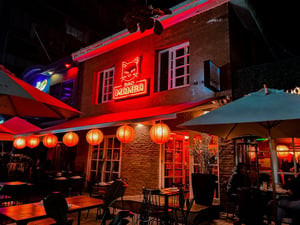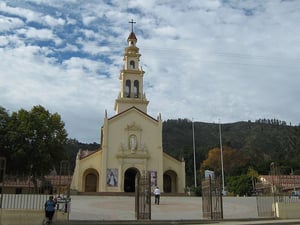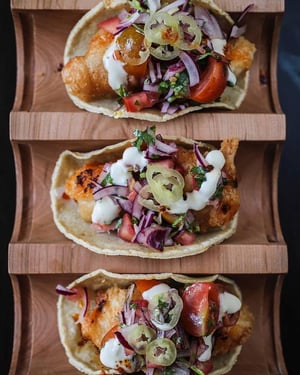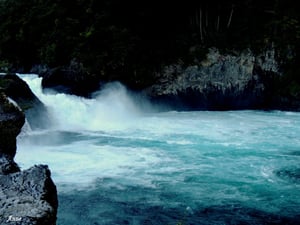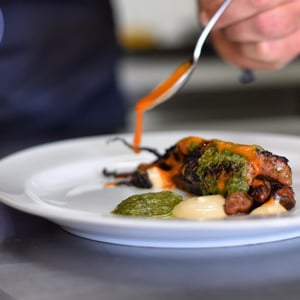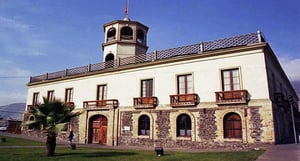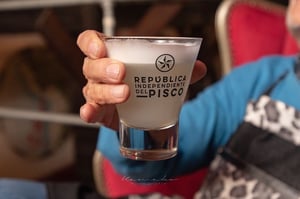Chilean Wine
The Chilean viticultural industry is often associated in export markets with consistent, good-value wines, but some world-class reds are also made, commanding high prices. For red wines the initial export mainstays have been Bordeaux varieties of Cabernet Sauvignon and Merlot.
Like many New World countries Chile has adopted a signature grape variety; here it is Carmenère, once widely grown in Bordeaux. It was thought to be extinct following the European phylloxera outbreaks of the 19th Century, but was rediscovered in Chile in the 1990s. Much of it was mixed up in vineyards with Merlot plants; the Carmenère vines were often assumed to be poorer performing mutations of the former. Once they were identified, and the fruit was allowed a week or two extra on the vine to fully ripen, blends featuring Carmenère and single variety bottlings began to gain traction. (NB this grape variety is usually spelt Carménère - with two accents - outside Chile.)
Pinot Noir from the cooler parts of Chile is beginning to make an impression, and Syrah is increasing in popularity in many regions offering a wide variety of styles. The supporting cast of red wine grape varieties in Chile includes additional bit-part players from Bordeaux; Petit Verdot, Cabernet Franc and Malbec. Emphasis on the latter has increased in the light of Argentina's success with the variety, though plantings in Chile date back to the 19th Century. Cinsaut and Carignan join Syrah in the Southern French contingent.
White wine plantings are led by Chardonnay – also grown in many differing macroclimates – which can achieve very high quality levels with prices to match, and Sauvignon Blanc. Viognier, Riesling and Semillon are among those varieties grown on a smaller scale.
Chile spans 4300 kilometers (2700 miles) of land running north-south between the Pacific Ocean and the Andes Mountains. The topography is very favorable to viticulture, and despite the fact that Chile is only 160 kilometers (100 miles) wide, most climatic variation in the wine-growing regions happens from east to west, rather than from north to south. The Pacific, with its Antarctic Humboldt Current, brings cooling breezes to coastal vineyards, while the sheltering presence of the Coastal mountain range makes Chile's Central Valley relatively warm and dry. Along the eastern edge of the country, in the foothills of the Andes, high altitudes and abundant meltwater rivers make for a different terroir again. With the Pacific Ocean on one side and the forbidding barrier of the Andes on the other, Chile's vineyards have remained protected from the phylloxera aphid.
Chile has been a wine-producing country since the first European settlers arrived in the mid-16th Century. The original vines, to make sacramental wine, were brought by Catholic missionaries directly from Spain or via Peru or California. The Mission grape variety – known here as Pais – was widely planted during this time, and became the mainstay of country wines for domestic consumption. It is most common in Maule and Bio Bio in the south, mainly grown by older farmers making field blends, but it is beginning to feature in many high-quality bottlings.
It wasn't until the 19th Century that viticulture began to expand in Chile, mainly due to the spread of wealth associated with mining in the Atacama Desert. European trends started to infiltrate Santiago, and a wine industry sprang up to the south of the city, around the Maipo Valley. Wine estates were built, with the styles of both wine and architecture heavily modeled on those of France. The estate vineyards of Concha y Toro, Cousino Macul and Santa Rita were established in this time.
Throughout the 20th Century, Chilean wine was limited to a domestic market, but a push toward quality in the latter half of the century saw an uptake in the international market. Whereas Chilean winemakers had traditionally used tanks and barrels made of beech wood, in the 1980s stainless-steel tanks and oak barrels were introduced, marking the start of a technology-driven era.


